At first my question is how to let a newly added row flash in JavaFx, then I went through a lot of questions related to this topic (such as javafx: table row flashing). Most of them are using setRowFactory and override the updateItem method by adding a Timeline animation which change the state of pseudoClass of the row. Below is my code, I am trying to building a FlashControl which can be reused.
public class TableFlashControl<T> {
private PseudoClass flashHighlight = PseudoClass.getPseudoClass("flash-highlight");
private List<T> newAdded = new ArrayList<>();
private boolean isFilterApplied = false;
private boolean isSorted = false;
public void setIsFilterApplied(boolean isFilterApplied) {
this.isFilterApplied = isFilterApplied;
}
public void add(TableView<T> table){
ListChangeListener<T> change = c -> {
while (c.next()) {
if (c.wasAdded()) {
List<? extends T> added = c.getAddedSubList();
T lastAdded = added.get(0);
if (!isFilterApplied) {
newAdded.add(lastAdded);
}
}
}
};
table.getItems().addListener(change);
table.setRowFactory(param -> new TableRow<T>() {
@Override
protected void updateItem(T item, boolean empty) {
super.updateItem(item, empty);
if (item == null || empty) {
return;
}
if (newAdded.contains(item)) {
if (isSorted) {
new Thread(()->{
Timeline flasher = new Timeline(
new KeyFrame(Duration.seconds(0.4), e -> pseudoClassStateChanged(flashHighlight, true)),
new KeyFrame(Duration.seconds(0.8), e -> pseudoClassStateChanged(flashHighlight, false))
);
flasher.setCycleCount(2);
flasher.play();
}).start();
if (item == newAdded.get(0)) {
newAdded.clear();
isSorted = false;
}
}else{
if(item == newAdded.get(0)){
isSorted = true;
}
}
}
}
});
}
}
Here ListChangeListener is associated with table.getItems() which helps me to record the newly inserted row.
It is possible to add multiple rows within one operation which means newAdded.size() can be larger than 1. What's more, rows are inserted from the top of the tableView(because I sort it with the Number.)
In tableView, not all rows are visible and updateItem methods only update those visible rows. My problem comes when these two situations happen(see below).
The first scenario
In first scenario, only 4 rows are visible, if user inserts 5 rows within one time, I cannot record the last row update(the updateItem won't be called for the new_row_5). Thereby, I cannot clear newAdded list (by doing newAdded.clear())
The second scenario
In the second scenario, only 4 rows are visible again. However, there are invisible rows both at top and bottom of the visible rows. If user inserts 2 rows, one will be visible and the other will be invisible. In my case, new_row_2 will flash while new_row_1 remains invisible. If user scrolls up the tableView when new_row_2 is flashing, he will see new_row_2 is flashing while new_row_1 is not which is really weird.
I also want to know if there is any way to find the number of visible rows.
I am still new to JavaFx and I don't know if this method is good or not. I hope someone can help me fix my problems. Thanks a lot!

